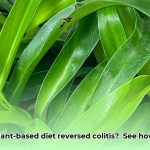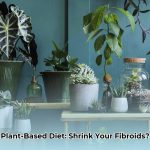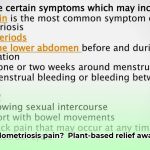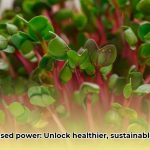Going gluten-free and vegan might seem like scaling Mount Everest, but with the right approach, it’s a manageable and rewarding journey. This guide acts as your Sherpa, providing the tools and knowledge to navigate this dietary landscape successfully. Consider this your friendly companion, guiding you through every aspect of this lifestyle. It’s crucial to remember that everyone’s body responds differently, so personalized adjustments are key. For a structured approach, check out this 30-day meal plan.
Understanding the Gluten-Free Plant-Based Diet
Embarking on a gluten-free plant-based diet means excluding both gluten (found in wheat, barley, and rye) and all animal products. This dual restriction requires careful planning to ensure you meet your nutritional needs. But don’t worry, it’s absolutely achievable with the right knowledge and resources.
Essential Nutrients: The Building Blocks of Your New Diet
Let’s explore the key nutrients you need to focus on and how to incorporate them into your daily meals:
-
Protein: Crucial for muscle building, cell repair, and overall bodily function. Excellent plant-based sources include:
- Lentils: Versatile and packed with protein and fiber.
- Beans (kidney, black, pinto, etc.): Inexpensive and filling.
- Chickpeas: Great in hummus, salads, and curries.
- Tofu and Tempeh: Soy-based protein sources that can be prepared in countless ways.
- Quinoa: A complete protein, meaning it contains all nine essential amino acids.
- Nuts and Seeds: Almonds, walnuts, chia seeds, hemp seeds, and pumpkin seeds are all good options.
-
Iron: Essential for carrying oxygen in the blood. Plant-based iron (non-heme iron) is not as easily absorbed as heme iron from animal products. To improve absorption:
- Consume iron-rich foods like spinach, kale, lentils, and fortified cereals.
- Pair these foods with a source of vitamin C, such as citrus fruits, bell peppers, or broccoli. Vitamin C significantly enhances iron absorption.
-
Calcium: Important for bone health, muscle function, and nerve transmission. Good sources include:
- Leafy green vegetables (kale, collard greens, bok choy).
- Fortified plant-based milks (almond, soy, oat). Choose varieties fortified with calcium and vitamin D.
- Tofu (calcium-set). Check the label to ensure it was processed with calcium sulfate.
- Almonds and sesame seeds.
-
Vitamin B12: Primarily found in animal products, so supplementation is essential for vegans.
- Take a B12 supplement daily or weekly, as recommended by your doctor or a registered dietitian.
- Look for fortified plant-based foods like nutritional yeast and some breakfast cereals. However, these sources may not provide sufficient B12, so supplementation is still recommended.
-
Omega-3 Fatty Acids: Important for brain health, heart health, and reducing inflammation. Plant-based sources include:
- Flaxseeds and Chia Seeds: Excellent sources of ALA, a type of omega-3 fatty acid.
- Walnuts: Another good source of ALA.
- Algae-based supplements: Provide DHA and EPA, the same types of omega-3s found in fish oil. Consider this option for more direct benefits.
-
Zinc: Important for immune function, wound healing, and cell growth. Plant-based sources include:
- Pumpkin seeds.
- Lentils and chickpeas.
- Cashews.
- Fortified cereals.
-
Iodine: Crucial for thyroid function.
- Use iodized salt when cooking.
- Consume seaweed (in moderation, as excessive iodine can be harmful).
- Consider a potassium iodide supplement if needed, but consult with a healthcare professional first.
Meal Planning and Grocery Shopping: A Strategic Approach
Navigating a gluten-free plant-based diet requires planning and careful attention to labels. Here’s how to make it easier:
-
Stock Your Pantry: Fill your pantry with gluten-free grains (quinoa, brown rice, oats certified gluten-free), legumes (lentils, beans, chickpeas), nuts and seeds (almonds, walnuts, chia seeds, flaxseeds), and gluten-free flours (chickpea flour, almond flour, rice flour).
-
Plan Your Meals: Plan your meals for the week to ensure you have all the necessary ingredients and to avoid impulsive, less healthy choices.
-
Explore Recipes: Find gluten-free, plant-based recipes online, in cookbooks, or from registered dietitians. Experiment and find what you enjoy.
-
Master Substitution: Learn how to substitute ingredients. For example, use flax eggs (flaxseed meal mixed with water) as an egg replacement in baking, or nutritional yeast for a cheesy flavor in sauces.
-
Read Labels Carefully: Always check labels to ensure products are both gluten-free and vegan. Look for certified gluten-free labels and be aware of hidden sources of gluten, such as soy sauce (use tamari instead) and some processed foods.
Sample Weekly Meal Plan: A Starting Point
| Day | Breakfast | Lunch | Dinner |
|---|---|---|---|
| Monday | Gluten-free Oatmeal with berries, nuts, and seeds | Lentil soup with gluten-free bread | Tofu stir-fry with brown rice and mixed vegetables |
| Tuesday | Smoothie with spinach, banana, almond milk, and flaxseed | Quinoa salad with chickpeas, cucumber, tomatoes, and a lemon vinaigrette | Chickpea curry with brown rice |
| Wednesday | Gluten-free toast with avocado and a sprinkle of red pepper flakes | Leftover chickpea curry | Black bean burgers on gluten-free buns with sweet potato fries |
| Thursday | Chia seed pudding with berries and coconut flakes | Salad with mixed greens, nuts, seeds, and a balsamic vinaigrette | Vegan chili with gluten-free cornbread |
| Friday | Gluten-free pancakes with fruit and maple syrup | Leftover vegan chili | Lentil Shepherd’s Pie with a mashed cauliflower topping |
| Saturday | Breakfast burrito (gluten-free tortilla) with scrambled tofu and veggies | Large salad with mixed greens, kidney beans, avocado, and a tahini dressing | Pasta with marinara sauce (gluten-free pasta) and roasted vegetables |
| Sunday | Gluten-free waffles with maple syrup and fruit | Leftovers | Roasted vegetables (broccoli, peppers, onions, sweet potatoes) with quinoa and a lemon-herb sauce |
Note: This is a sample plan. Adjust it to your preferences and dietary needs. Always double-check all ingredients.
Addressing Potential Deficiencies and Supplementation
A well-planned gluten-free plant-based diet can be nutritious, but deficiencies can occur.
- Regular blood tests can help monitor your nutrient levels.
- Consult with a doctor or registered dietitian to discuss potential deficiencies and appropriate supplementation.
- Supplements should be used strategically, not as a replacement for a balanced diet.
Navigating Challenges: Cross-Contamination and Product Availability
- Cross-Contamination: Prevent cross-contamination by using separate cutting boards, utensils, and toasting equipment for gluten-free foods. Clean all surfaces thoroughly after preparing gluten-containing foods.
- Product Availability: The availability of gluten-free vegan products varies. Be prepared to shop at multiple stores or order online.
Your Gluten-Free Plant-Based Diet Journey
Adopting this lifestyle is a journey that requires planning, effort, and a willingness to learn. Remember to listen to your body, seek professional guidance, and celebrate your successes. This is a commitment to your health and well-being.
- Plant-based Diet Colitis Remission: Success Stories - December 18, 2025
- Plant Based Diet Breast Cancer: Research-Based Benefits - December 16, 2025
- Plant-Based Diet Ulcerative Colitis Remission: Proven Benefits - December 15, 2025









